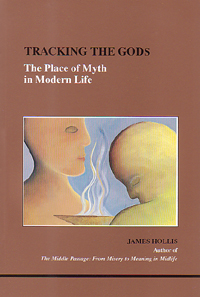By
definition we cannot know the mysteries, but we
are driven by our nature to stand in meaningful
relationship to them. (The first sentence of Aristotle’s
Metaphysics is “All men, by nature,
desire to know.”) The images of myth, when
drawn from the depths, stir and touch us even
when we do not know why, because they intimate,
even activate, the mysterious depths we embody
as well. Myth then resonates because it intimates
what we already carry in our nature but can only
dimly perceive by cognition.
Many of us were inured to the voice of myth by
early exposure to Greek or Judeo-Christian myth.
We were badly served by teachers or clerics, who
construted them as interesting but faded narratives
of a remote past, or insisted that we accept as
literal what offended common sense. Perhaps such
purveyors of myth had themselves never tumbled
to the resonant depths of mythic materials; whatever,
they damaged myth for us. Both trivialization
and literalism are egregious affronts to the soul.
Both miss the point.
The
soul… expresses itself through images but
is not that image. As Sören Kierkegaard reminded
us, “The god which can be named is not God.”
The dynamic incarnation of soul through the image
manifests this mysterious energy. When we resonate
to this incarnated energy, we know we are in the
presence of soul. When, for whatever reason, the
energy no longer enlivens that image for us, then
that structure dies for us as a source of the
divine. There remains but a dead myth or ritual
that touches us not. This is how a god or an entire
religious institution can die. The energy has
departed, leaving a dry husk.
So
it is with us – life energy enters us at
conception, mysteriously, and departs, mysteriously,
leaving only a husk. What is living in a symbol,
a myth or a person is the divine energy, not the
vessel. Thus we see how our teachers and religious
leaders misunderstood. To see myth simply as interesting
old stories is to say that the energy that once
entered those images and rendered them luminous
has now departed, seeking incarnation elsewhere.
To literalize a myth or symbol and require its
worship, on the other hand, is the oldest of religious
sins: idolatry. The mystery the image once contained
is now lost and one worships an empty shell no
longer worthy of adoration. When the image (that
is, the symbol) no longer points beyond itself
to the precincts of mystery, then it is dead.
But the mystery lives on, elsewhere.
********************
These twin tasks – to live one’s own
life and to serve the mystery – are, paradoxically,
aspects of the same thing, for the former obliges
not only a willingness to accept responsibility
for the course of one’s life and for the
meaning it embodies, but also the right to experience
the absolutely different path it may take from
those who have gone before. To reach the end of
one’s life and to know that one has not
truly taken the journey is more terrible than
any terrors one would have had to face on the
way.
To feel that linkage to the larger order of things,
a linkage by way of relationship, by way of meaningful
social engagement, by way of wonder and terror
at the forces of nature, by way of dream work
and dialogue with the splintered psyche, is to
experience the paradox that by the humble task
of simply being ourselves we are thus more than
ourselves. Then, in a time when the gods seem
to have gone away, we may nonetheless glimpse
the divine.
|
